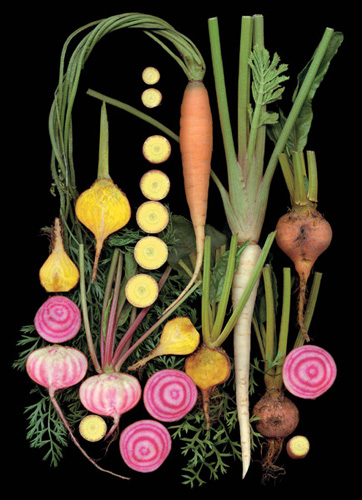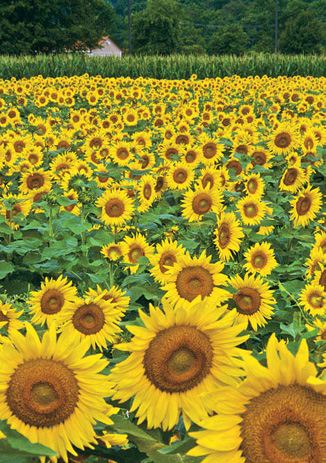
Children find funny-looking vegetables alluring. Grow purple broccoli with kids and they might even eat it. Try purple pole beans, and some of these quirky edibles Beta vulgaris ‘Golden’ beet; sliced yellow Daucus carota subsp. sativus ‘Rainbow Mix’ carrot; orange D. c. subsp. s. ‘Rainbow Mix’ carrot; white Pastinaca sativa ‘Hollow Crown’ parsnip; bull’s eye slices of beet Beta vulgaris ‘Chioggia’.

The first way to engage children in gardening is to show them some quirky flowers. Point out the faces one can see in pansies—once called little brothers. Make the snapdragon flowers talk by squeezing the sides of the blossoms. Show how the inflorescence of the obedient plant (Physostegia virginiana) may be bent in one direction or another and hold that shape. Pick some herbs and share the fragrance when the leaves are crushed.
Kids can be a bit impatient, so select some fast-sprouting seeds to sow indoors in late winter like beans or sunflowers. In cool weather outdoors, plant radishes, and when the weather warms, marigolds.
Children are fascinated by exaggerations of scale—enlarged versions of familiar things or shrunken ones. Grow some giant plants and some tiny ones: huge sunflowers for example, or little grape tomatoes. Be sure to grow a few things that children will be able to harvest, cook, and eat. Grow strange fruits and vegetables like gourds, rainbow Swiss chard, or purple carrots. Make a bamboo-tepee as a fort and cover it with scarlet-runner beans with flowers that last for months followed by fruit.
Plant a tree with an older child that will be his or her very own. The tree won’t instantly grow to maturity, but there will be occasions to visit the plant as it gets taller and perhaps blossoms. Planting trees with children can help them realize that these are living things worthy of respect.
Visit some giant trees in your area. Encourage kids to learn their names. In the fall, make a scrapbook of pressed fallen leaves in their autumn glory. Collecting leaves is a great activity. Compare different leaf shapes and sizes and learn to identify trees
The most important thing is to get kids outdoors. It seems to me that we are now into the second generation of people who have little connection with nature, and worse, fear it. Some children seem to have been taught that nature is dangerous; that germs are out to get them and predators hide behind every bush. Take a young child outdoors before he or she is three years old. Turn over a rock in search of an interesting insect or a wriggly worm. You may help capture the imagination of a young person and arouse a curiosity and fascination with the natural world that will last a lifetime.
Sunflowers sprout quickly from sown seed, in a matter of days, and easily grow large to the delight of kids.
